Trade theories form the backbone of international economics, providing frameworks to understand global trade patterns. These theories have evolved over centuries, influencing policies and shaping global markets. So, what is the most important trade theory? It’s important to find out what other theories have contributed to our understanding of trade before diving in.
If you understand these concepts, you’ll be able to make better trading decisions. In this blog post, we will journey through the major trade theories, from classical to modern. We will compare their relevance, applications, and impacts on today’s global trade. We’ll figure out which trade theory is the most important by the end.
Traders and investors must have reliable resources and tools to navigate global markets. The Prime XBT platform offers a comprehensive suite of tools for crypto trading, so it’s easier to implement these trade theories. So, join PrimeXBT today! Use promo code PRIMEOTT to receive a +7% bonus on your deposit.
What are Trade Theories?
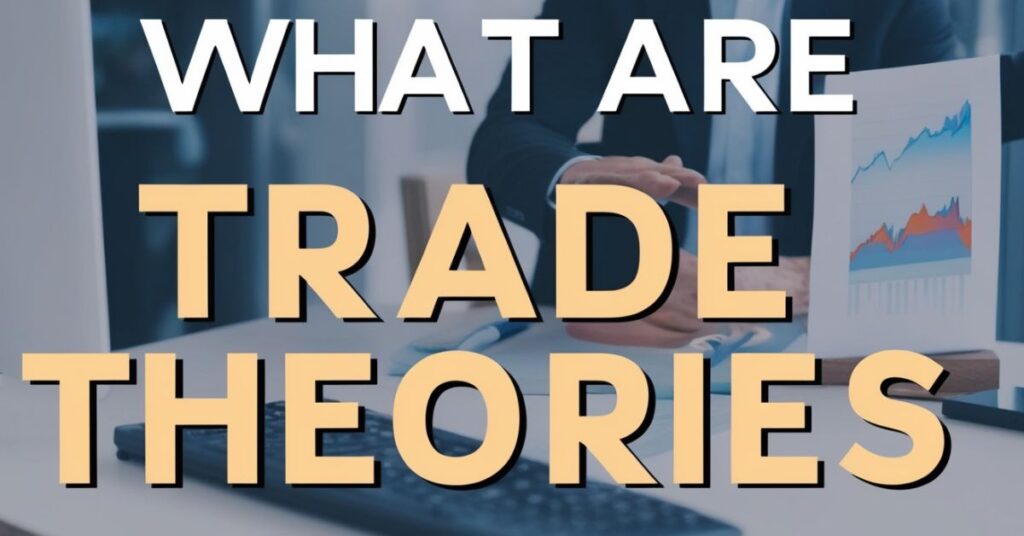
Trade theories are frameworks that explain how and why countries engage in international trade. They help economists understand the benefits and patterns of global trade. The analysis of these theories can help us better understand how nations interact economically.
Trade theories guide policymakers in forming effective trade policies and assist businesses in making informed decisions about international markets.
Historical Context for Trade Theory
The evolution of trade theories spans several centuries. Early theories, like mercantilism, emphasized accumulating wealth through trade surpluses. In the 18th century, Adam Smith introduced the concept of absolute advantage, promoting specialization.
David Ricardo later developed the theory of comparative advantage, highlighting mutual benefits from trade. The 20th century saw the emergence of neoclassical theories, like the Heckscher-Ohlin model, which focused on factor endowments.
Modern theories, such as Paul Krugman’s new trade theory, address economies of scale and market size. This evolution reflects the changing dynamics of global trade and economic thought.
What is the Most Important Trade Theory?
Identifying the most important trade theory requires examining various criteria. These include predictive power, influence on policy, and real-world applicability. Among the many theories, the theory of comparative advantage stands out as the most crucial.
Comparative Advantage Theory
David Ricardo’s comparative advantage theory is fundamental to modern economics. It explains how countries benefit from trade by specializing in what they produce most efficiently. Even if one country is less efficient in creating all goods, it can still help by focusing on what it does best. This theory highlights mutual gains from trade, leading to overall economic growth.
Why Comparative Advantage is Crucial
Comparative advantage forms the basis of many trade policies. It encourages countries to specialize and trade, maximizing global efficiency and productivity. The theory has been extensively validated through empirical research. It shows that nations engaging in trade according to comparative advantage experience higher economic welfare.
Real-World Applications
The theory of comparative advantage is reflected in various international agreements and trade policies. Organizations like the World Trade Organization (WTO) promote trade liberalization based on these principles. Countries adopting this approach have seen significant economic improvements and growth.
Impact on Developing Countries
Comparative advantage is particularly important for developing nations. It allows them to participate in global trade by focusing on their strengths. It can lead to increased foreign investment, technological advancements, and improved living standards.
Criticisms and Adaptations
While powerful, the theory is not without criticisms. Some argue it oversimplifies real-world complexities, such as trade barriers and unequal resource distribution. However, adaptations and extensions of the theory address these issues, maintaining its relevance.
Classical Trade Theories
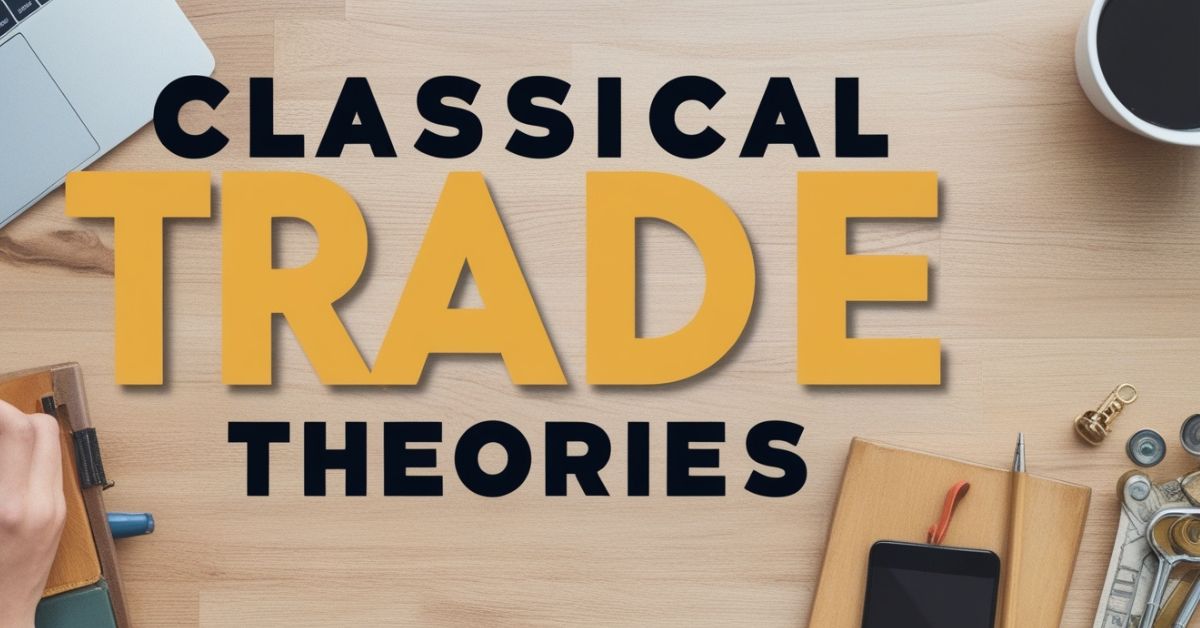
Classical trade theories lay the foundation for international trade economics. They offer insights into how nations interact through trade. This section explores three significant classical trade theories: mercantilism, absolute advantage, and comparative advantage.
1. Mercantilism
Mercantilism arose in the 16th century. It dominated European economic thought until the late 18th century. This theory views national wealth as the accumulation of precious metals. Countries should maximize exports while minimizing imports. Mercantilism encouraged protectionist policies to support domestic industries.
Key Proponents
Key figures in mercantilism include Thomas Mun and Jean-Baptiste Colbert. Adam Smith also contributed critiques of this theory. Mun argued for a positive trade balance to achieve prosperity. Colbert implemented policies promoting industry and restricting imports.
Criticisms and Limitations
Mercantilism faces criticism for its zero-sum approach to trade. Critics argue this perspective overlooks mutual benefits. Additionally, protectionist policies can create economic distortions. These distortions often lead to inefficiencies and hinder economic growth.
2. Absolute Advantage (Adam Smith)
Adam Smith introduced absolute advantage in “The Wealth of Nations.” This theory states that countries should specialize in efficiently producing goods. Nations can produce goods at lower costs or higher quality. By trading specialized goods, countries increase overall efficiency.
Examples and Applications
For example, if Country A efficiently produces textiles while Country B efficiently produces wine, both should specialize. Country A exports textiles, and Country B exports wine. This trade allows both countries to access more goods at lower costs.
Impact on Trade Policies
Smith’s theory influenced trade policies supporting free trade. He argued that removing trade barriers benefits countries. This approach enables nations to capitalize on absolute advantages. It leads to increased production and consumption.
Neoclassical Trade Theories
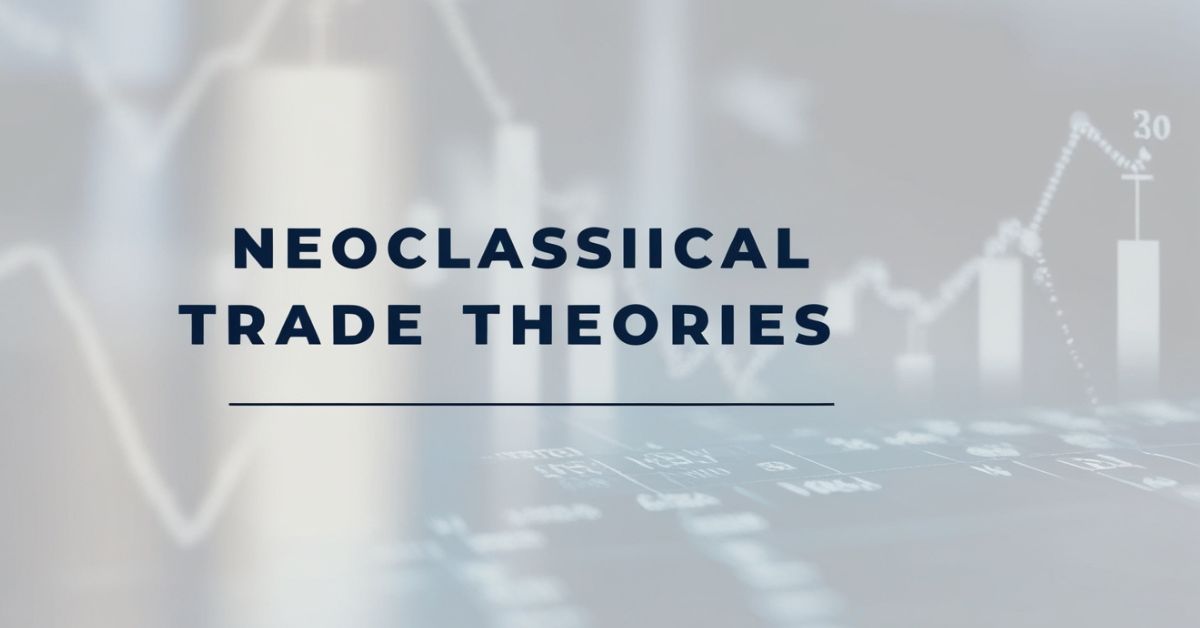
Neoclassical trade theories build on classical theories, focusing on the allocation of resources and factors of production. They analyze how these elements influence international trade patterns. This section covers two key neoclassical theories: the Heckscher-Ohlin model and factor price equalization.
1. Heckscher-Ohlin Model
Economists Eli Heckscher and Bertil Ohlin developed the Heckscher-Ohlin model. This theory posits that countries have different factor endowments, such as labor and capital, which determine a country’s comparative advantage. Nations will export goods that utilize their abundant factors and import goods that require scarce factors.
Key Assumptions and Predictions
The model assumes that production technologies are the same across countries. It also assumes that goods are homogenous and factors are mobile within countries. As a result, countries will specialize in producing goods based on their factor endowments. The model predicts that trade will increase with the mobility of factors and lead to greater efficiency.
Real-World Applications and Criticisms
The Heckscher-Ohlin model applies to various trade patterns observed globally. For example, countries rich in capital tend to export capital-intensive goods. However, the model faces criticisms for oversimplifying factors of production.
Critics argue that it does not account for technology differences or government policies. Furthermore, it has been criticized for failing to explain trade patterns in some developed countries.
2. Factor Price Equalization
Factor price equalization is an extension of the Heckscher-Ohlin model. This theory suggests that trade leads to the equalization of factor prices across countries. When countries trade, the demand for abundant factors increases, raising their prices. Conversely, the prices of scarce factors decline as demand decreases.
Examples and Real-World Observations
For example, if a capital-abundant country trades with a labor-abundant country, labor prices may rise in the capital-abundant country. This process continues until factor prices converge. Empirical studies show that factor price equalization occurs to some extent in global trade. However, the importance of convergence can vary based on market conditions.
Criticisms and Limitations
Despite its theoretical appeal, factor price equalization has limitations. Critics argue that trade does not always equalize factor prices. Factors such as labor mobility, trade barriers, and differences in technology can affect this outcome. Additionally, empirical evidence supporting this theory is mixed, indicating a more complex relationship in real-world scenarios.
Modern Trade Theories
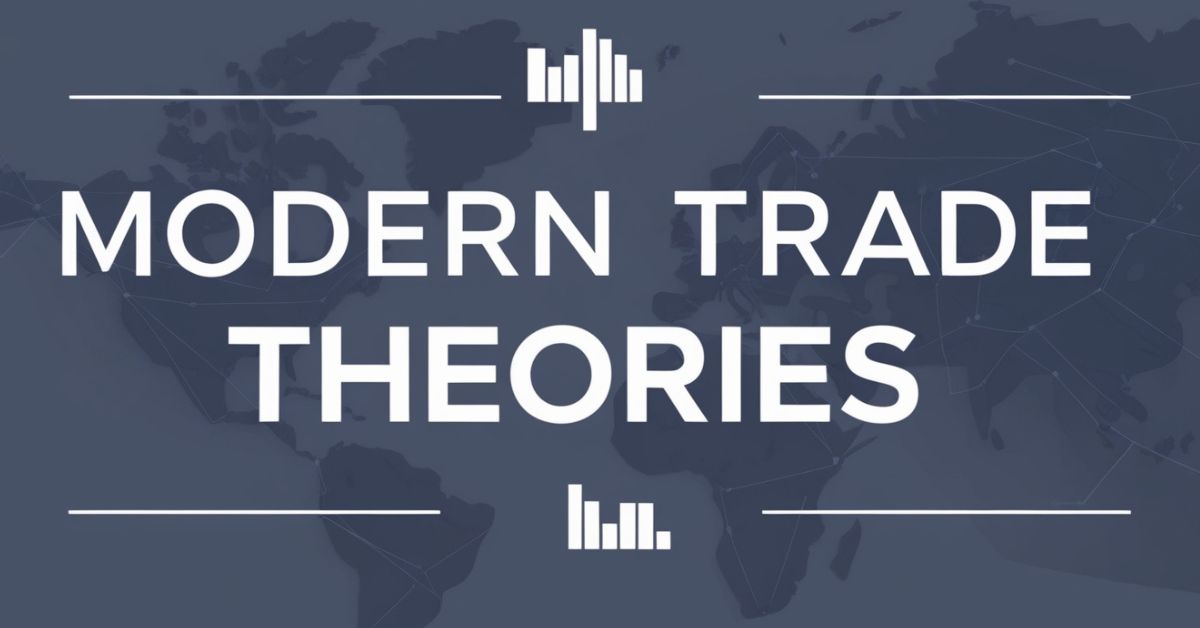
Modern trade theories address complexities in global trade that earlier models did not fully explain. They incorporate factors like economies of scale, market structures, and innovation. This section discusses two prominent modern trade theories: the New Trade Theory and Porter’s Diamond Model.
1. New Trade Theory (Paul Krugman)
Paul Krugman developed the New Trade Theory in the 1980s. This theory emphasizes the role of economies of scale in international trade. It suggests that large-scale production can lead to lower average costs. As firms expand, they can become more competitive globally.
Importance of Economies of Scale and Network Effects
Economies of scale result from increased production, which lowers costs per unit. This concept explains why countries may specialize in specific industries. Network effects also play a crucial role, where the value of a product increases as more people use it. This interplay can lead to monopolistic competition in certain markets.
Examples and Real-world Applications
For instance, the automotive industry exemplifies the New Trade Theory. Large manufacturers benefit from economies of scale, producing cars at lower costs. Countries with advanced automotive industries export vehicles globally, gaining a competitive advantage. Krugman’s theory effectively explains these patterns in trade.
2. Porter’s Diamond Model
Michael Porter introduced the Diamond Model in the 1990s. This model analyzes nations’ competitive advantage in specific industries. It suggests that national prosperity results from a combination of four key factors: factor conditions, demand conditions, related and supporting industries, and firm strategy, structure, and rivalry.
Key Components and Their Interactions
- Factor Conditions: Refers to a nation’s resources, such as skilled labor and infrastructure.
- Demand Conditions: The nature of domestic demand influences industry competitiveness.
- Related and Supporting Industries: The presence of supplier industries enhances competitiveness.
- Firm Strategy, Structure, and Rivalry: The way firms are organized and compete affects industry success.
These components interact dynamically, creating an environment for national competitive advantage.
Examples of National Competitive Advantages
For example, Germany excels in engineering and manufacturing due to its strong factor conditions. The presence of advanced suppliers and a demanding domestic market further enhances competitiveness. Similarly, Silicon Valley thrives on innovation, skilled labor, and supportive institutions, illustrating Porter’s model.
Key Debates in Trade Theory
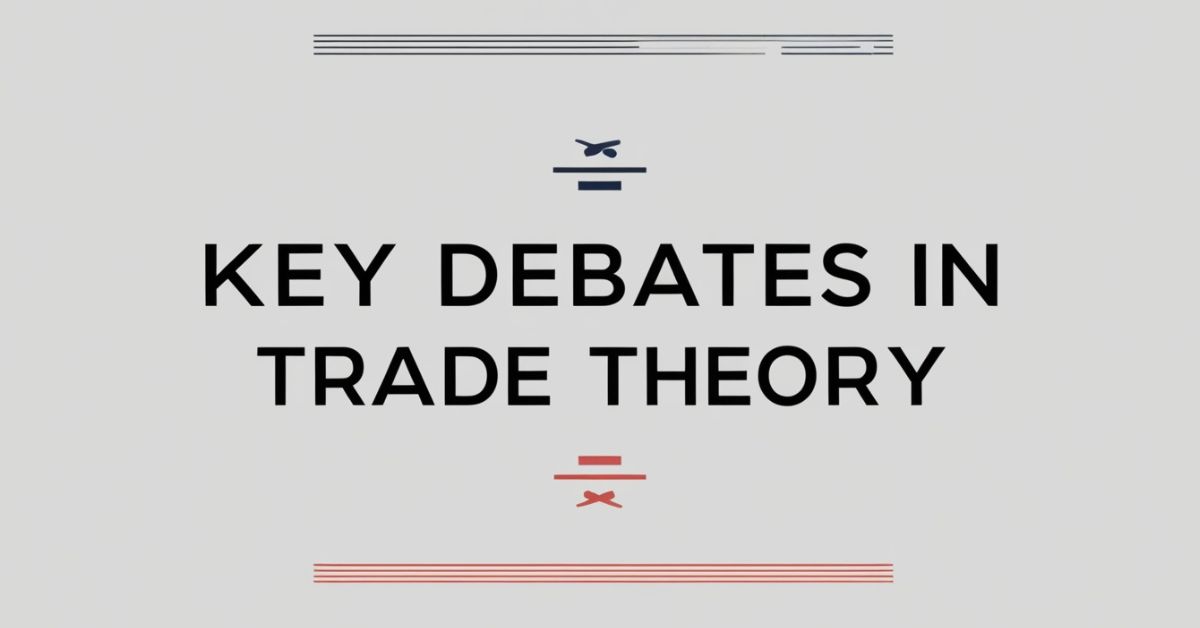
Key debates in trade theory often center around the benefits of free trade versus protectionism. These discussions consider the implications for economic growth, income distribution, and global relationships. This section explores arguments for and against free trade, as well as the impact of trade theories on developing countries.
Free Trade vs Protectionism
Proponents of free trade argue it promotes economic growth and efficiency. By reducing barriers, countries can specialize in goods where they hold comparative advantages. This specialization increases overall productivity and consumer choice. Additionally, free trade can lower prices for consumers by fostering competition.
Conversely, critics argue that free trade can lead to job losses and wage stagnation in certain sectors. They contend that domestic industries may struggle against cheaper imports. Critics also highlight potential negative environmental impacts from increased production and transportation.
Historical Examples and Case Studies
Historically, the debate between free trade and protectionism has been significant. The Smoot-Hawley Tariff of 1930 raised import duties in the U.S. This protectionist policy exacerbated the Great Depression by stifling international trade. In contrast, post-World War II trade agreements like GATT promoted free trade and contributed to global economic recovery.
More recently, the North American Free Trade Agreement (NAFTA) sparked debates about its impact on job creation and wage levels. While proponents argued it boosted trade, critics claimed it led to job losses in manufacturing.
How Different Trade Theories Address the Development Gap
Different trade theories provide insights into how developing countries can navigate global trade. Classical theories like comparative advantage suggest that developing countries can benefit from specializing in labor-intensive goods. This approach can enhance economic growth and reduce poverty.
However, modern theories like Porter’s Diamond Model emphasize the importance of building competitive industries. Developing countries need to invest in education, infrastructure, and innovation, which fosters a conducive environment for competitive advantages.
Read More: What Does Bag Holding Mean?
Conclusion
A knowledge of trade theory is essential for navigating the global economy of today. Every theory offers a unique perspective on trade dynamics and their implications for countries and industries.
As you explore these concepts, consider how effective trading strategies can enhance your decision-making. Do you lose money to panic selling, FOMO, overtrading, and bag holding? We recommend the Vestinda trading app for automating crypto trading strategies to eliminate emotional decisions. Take control of your investments and trade smarter!
